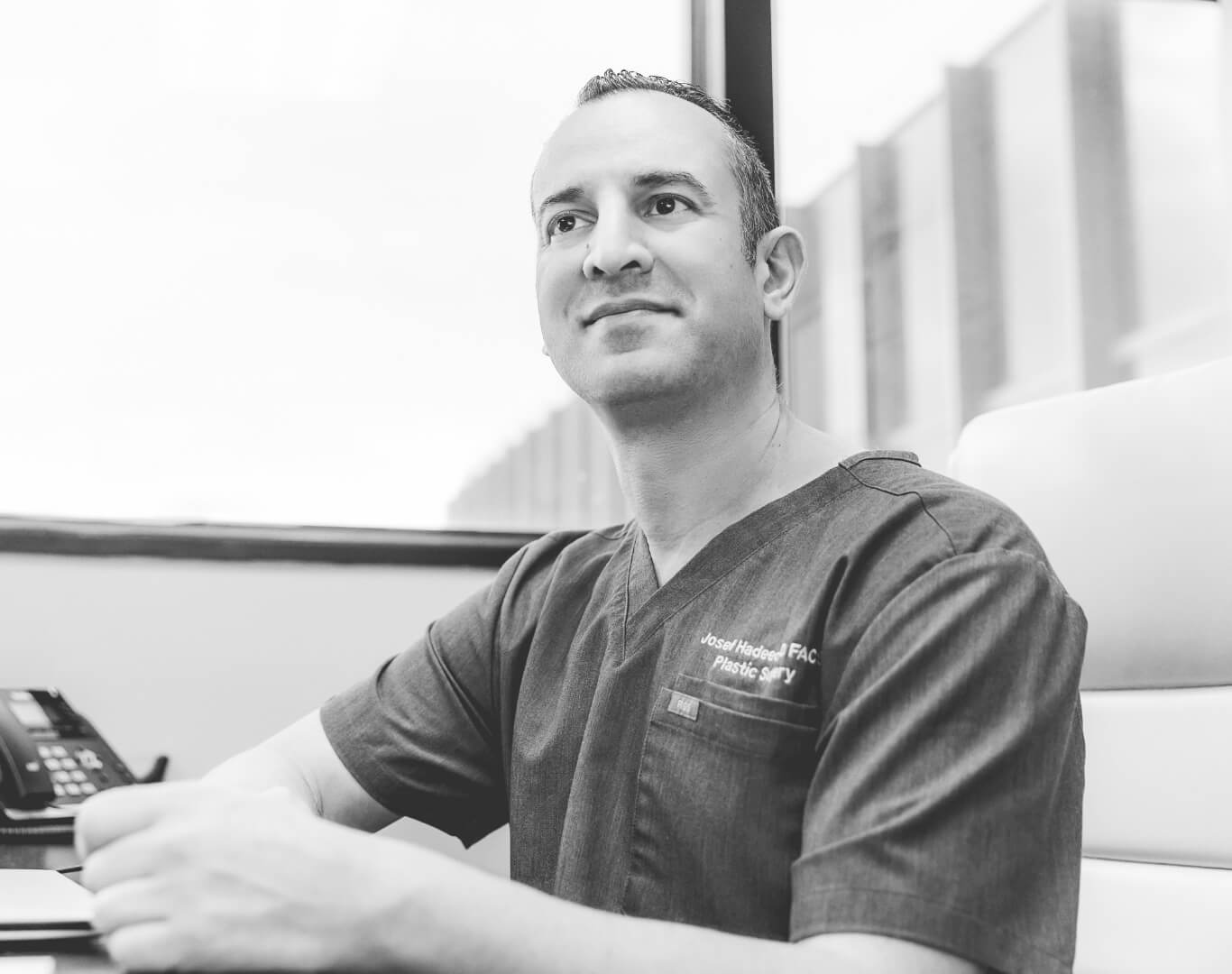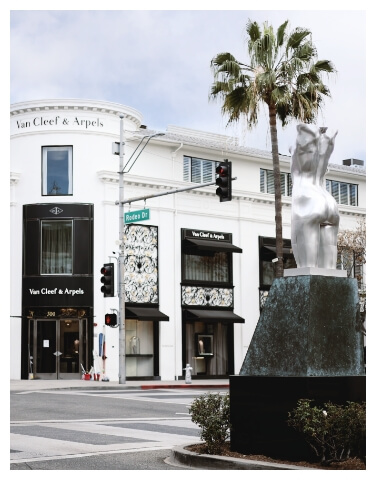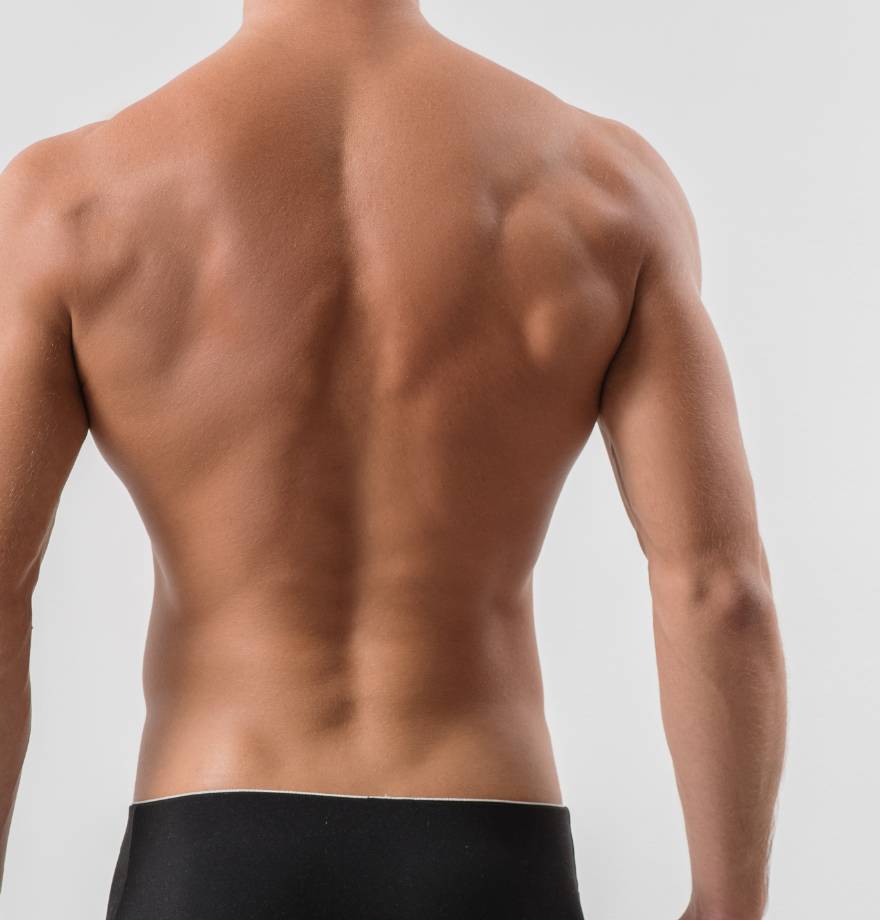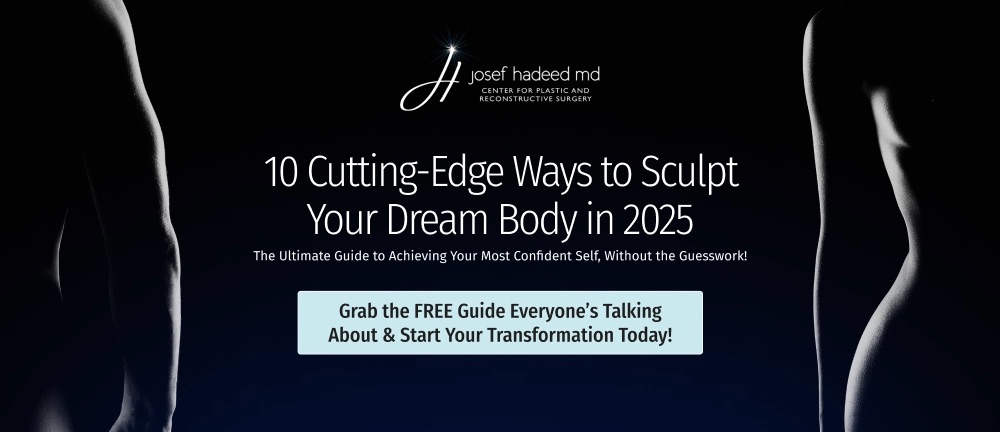Pilonidal Cyst
If you have a pilonidal cyst, you probably know how uncomfortable it can be. Dr. Hadeed is a board-certified plastic surgeon with years of experience treating cysts and getting patients back to the life they want to live.
What Is A Pilonidal Cyst?
A pilonidal cyst is a skin growth that occurs at the base of the spine (tailbone) above the buttocks. Current medical knowledge suggests they are caused by ingrown hairs, though this is not confirmed.
Many pilonidal cysts are small and go away on their own, but some can be recurrent. If the cyst gets infected, it can cause more serious concerns and may require surgical excision to remove.
Infected Pilonidal Cyst Symptoms
If your pilonidal cyst is infected, it may:
- Cause redness and swelling at the base of your spine
- Become enlarged and painful
- Fill with pus, which can leak, soil clothing, and cause odor
How To Treat A Pilonidal Cyst
If you have a pilonidal cyst, the first step is to see a doctor and determine if it is infected. If there’s no infection, your physician may offer treatment options such as antibiotics and draining the cyst. If the pilonidal cyst is infected or has returned after previous treatment, surgical excision is likely needed.
The first step of your treatment is making an appointment with Dr. Hadeed. During your consultation, he will evaluate your condition and make sure your symptoms are consistent with a pilonidal cyst.
If needed, he will recommend surgical excision of your cyst and answer any questions you have about the operation.
Schedule A ConsultationHow Is Pilonidal Cyst Treatment Performed?
Excision
The procedure is performed under general anesthesia to prevent you from feeling pain.
Once you are asleep, Dr. Hadeed will drain the cyst. Drainage may be done in several ways, such as with a lance, small incision, or syringe.
Once the cyst is drained, your surgeon will remove the infected tissue. Dr. Hadeed is an expert in this procedure. Based on his experience, the best option is wide excision, which also removes skin and tissue in a shallow area around the cyst. This makes it easier to remove all of the infected tissue and reduces the chance of your cyst returning.

See many examples of real patients before & after results

Wound Closure
Once all the infected tissue is removed, Dr. Hadeed will use advanced techniques to close and protect your incision site. This may include using skin flaps or grafts to cover the site.
Alternatively, he may pack the open wound with gauze to let the wound heal over time. A drain may be placed that will remove excess fluid as the area heals.
In either case, you will receive instructions on follow-up care. These instructions will include practices to ensure your incision sites stay clean during your recovery.
About Pilonidal Cyst Recovery And Results
How Long Is Pilonidal Cyst Surgery Recovery?
Most patients can resume work and low-impact daily activities within four to six weeks of their operation. If you have surgical drains, they will be removed after several weeks. Patients should refrain from vigorous exercise for a few months.
It may take three to six months for your incision to fully close and heal. You should avoid submerging yourself in water such as the ocean, baths, pools, or hot tubs during this time. You may also need a specialty pillow to keep weight off the treated area.
Will Pilonidal Cyst Removal Leave Scars?
If Dr. Hadeed uses skin flaps or stitches to seal your incisions, scarring will be visible but probably minor. If skin grafts are used, there will likely be some degree of scarring and skin discoloration. In addition, there will be scarring at the donor site. There will be a large scar if the incision site is packed with gauze, but it should fade over time.
What Are The Results Of Pilonidal Cyst Removal Surgery?
For most patients, the removal of their pilonidal cyst improves their quality of life and health. Once the cyst is removed, patients must be vigilant about keeping the area clean, dry, and shaved for up to a year.
Frequently Asked Questions About Pilonidal Cyst Treatment
What causes pilonidal cysts?
Current understanding suggests that pilonidal cysts are caused by hairs growing into the skin. Other debris, such as dirt, may also accumulate within the cyst. This can cause a cyst that becomes infected.
Pilonidal cysts are not contagious and will not spread to other people through touch, exchange of bodily fluids, or any other known vector.
Risk factors for developing a pilonidal cyst may include:
- Genetic factors/family history of pilonidal cysts
- Excess weight/high BMI
- A job that requires constant sitting without an opportunity to get up periodically, such as cab drivers and truck drivers
- Poor hygiene around the lower back and buttocks
How much does pilonidal cyst treatment cost in Beverly Hills?
Your pilonidal cyst surgery costs will be based on the severity of your cyst and the techniques used to treat it. In general, you should expect surgical fees, facility fees, and anesthesiologist fees, which will vary depending on the length of the operation.
Will surgery permanently treat my pilonidal cysts?
Dr. Hadeed’s wide excision technique has an incredible success rate at permanently removing pilonidal cysts and preventing them from growing back. However, there is always a chance that the cyst may re-emerge at some point.
How should I sleep after my pilonidal cyst surgery?
After your operation, you should sleep on your stomach or side for four to six weeks. This will give your incision time to heal. If you cannot sleep in this way, you may consider placing pillows under your back and legs to keep your tailbone off the bed.
If your job requires you to sit for long stretches, you may want to purchase a specialty medical pillow that will allow you to sit without placing pressure on your buttocks or tailbone.
What are the risks associated with pilonidal cysts removal?
As with any surgical procedure, there are certain risks associated with excising infected tissue like pilonidal cysts.
Some of these risks include:
- Excess scarring
- Poor wound healing
- Infection
- Excess bleeding
- Persistent pain
What other skin procedures does Dr. Hadeed perform?
As a double board-certified plastic and reconstructive surgeon, Dr. Hadeed offers other plastic surgery procedures, including:


Beverly Hills, California
9454 Wilshire Blvd
Suite 710
Beverly Hills, CA 90212


